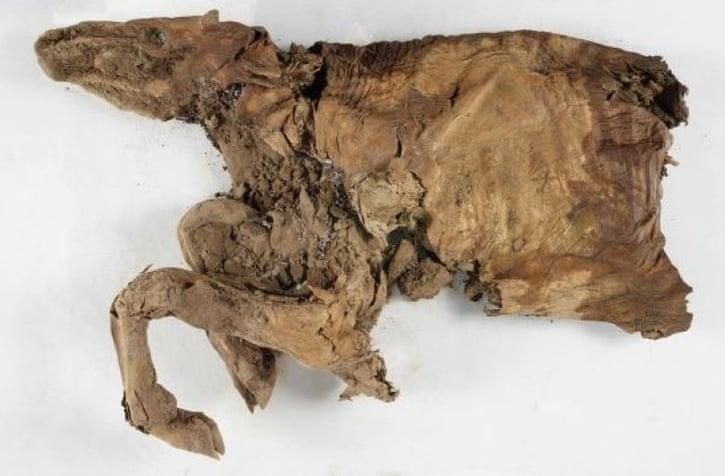Gold Miners Unearth 50,000-Year-Old Caribou Calf, Wolf Pup From Canadian Permafrost
Both animals’ fur, skin and muscle are almost perfectly preserved
/https://tf-cmsv2-smithsonianmag-media.s3.amazonaws.com/filer/4e/9e/4e9e4636-edcc-467d-becd-dac3df2ecdd7/yukon_gov.jpg)
Today, the landscape of Dawson City, Yukon—a northwestern Canadian territory famed for its role in the late 19th-century Klondike Gold Rush—is dominated by heavy forest cover, but some 50,000 years ago, the region was a freezing tundra with no trees. Long-extinct animals, including woolly mammoths and western camels, roamed the area alongside mammals whose distant descendants still populate Arctic territories today, navigating the arid climate with mixed success.
Now, two of these Ice Age creatures—a caribou calf and a wolf pup—have emerged from the Yukon permafrost, or permanently frozen ground, thousands of years after their deaths with their fur, skin and muscles almost completely intact.
The Guardian’s Anthea Lacchia writes that the mummified animals, which were unearthed by gold miners back in summer 2016, made their public debut last Thursday. Both have been radiocarbon-dated to more than 50,000 years ago, making the state of their preservation all the more impressive. As paleontologist Grant Zazula tells the The Canadian Press, the specimens are amongst the oldest examples of mummified mammal soft tissue ever found, and the wolf cub is the only one of its kind yet to be unearthed.
According to BBC News, the wolf is the better-preserved of the two specimens, retaining everything from its fur to its tail and and curled upper lip. Researchers believe the pup died when it was roughly eight weeks old. The caribou is in worse condition, with only its head, torso and front limbs intact, but like the wolf, it provides a singular example of mummified animal skin, muscle and hair.
CBC News reports that the caribou was found in a gold mine owned by local reality TV star Tony Beets in June 2016. The calf was buried in permafrost near an 80,000-year-old bed of volcanic ash, which Zazula says originated from Ice Age-era eruptions. One month later, another local miner chanced upon the wolf cub, which he initially identified as a deceased dog.

This isn’t the first time the Canadian permafrost has yielded a spectacular mummified find. About 30 years ago, two miners uncovered the partial remains of a roughly 26,000-year-old Yukon horse, but as Zazula tells the Canadian Press, no significant soft-tissue specimens had emerged since.
“We sometimes get jealous because in Siberia, … it seems like they find a new woolly mammoth carcass every summer,” he notes. “But we never seem to find those in the Yukon or Alaska.”
It’s true that the Siberian region of Yakutia is renowned for its seemingly endless string of singular discoveries: At the end of August, researchers chanced upon the mummified remains of a 30,000- to 40,000-year-old baby horse. And, last November, a Russian local discovered the frozen remains of an extinct cave lion cub that died up to 50,000 years ago.
Thanks to the Yukon caribou calf and wolf cub, however, Canadian scientists finally have a pair of specimens that rival any Siberian finds.
The Canadian Press reports that researchers’ next step will be genetic testing designed to provide insights on the ancient animals’ diets, which in turn reveal information about their Ice Age environment, and analysis of the pair’s bone composition.
For now, the mummified specimens will remain on display at Dawson City’s Dänojà Zho Cultural Centre. Eventually, the remains will be incorporated within an exhibition at the Beringia Interpretive Centre in Whitehorse.
“When you look at fossil bones, that's one thing,” Zazula concludes. “But when you actually see a whole animal from an ancient time, it brings that ancient time to life. It just makes you ponder about the amazing changes that have happened in the environment, the climate and the animal community since that time."
/https://tf-cmsv2-smithsonianmag-media.s3.amazonaws.com/accounts/headshot/mellon.png)
/https://tf-cmsv2-smithsonianmag-media.s3.amazonaws.com/accounts/headshot/mellon.png)